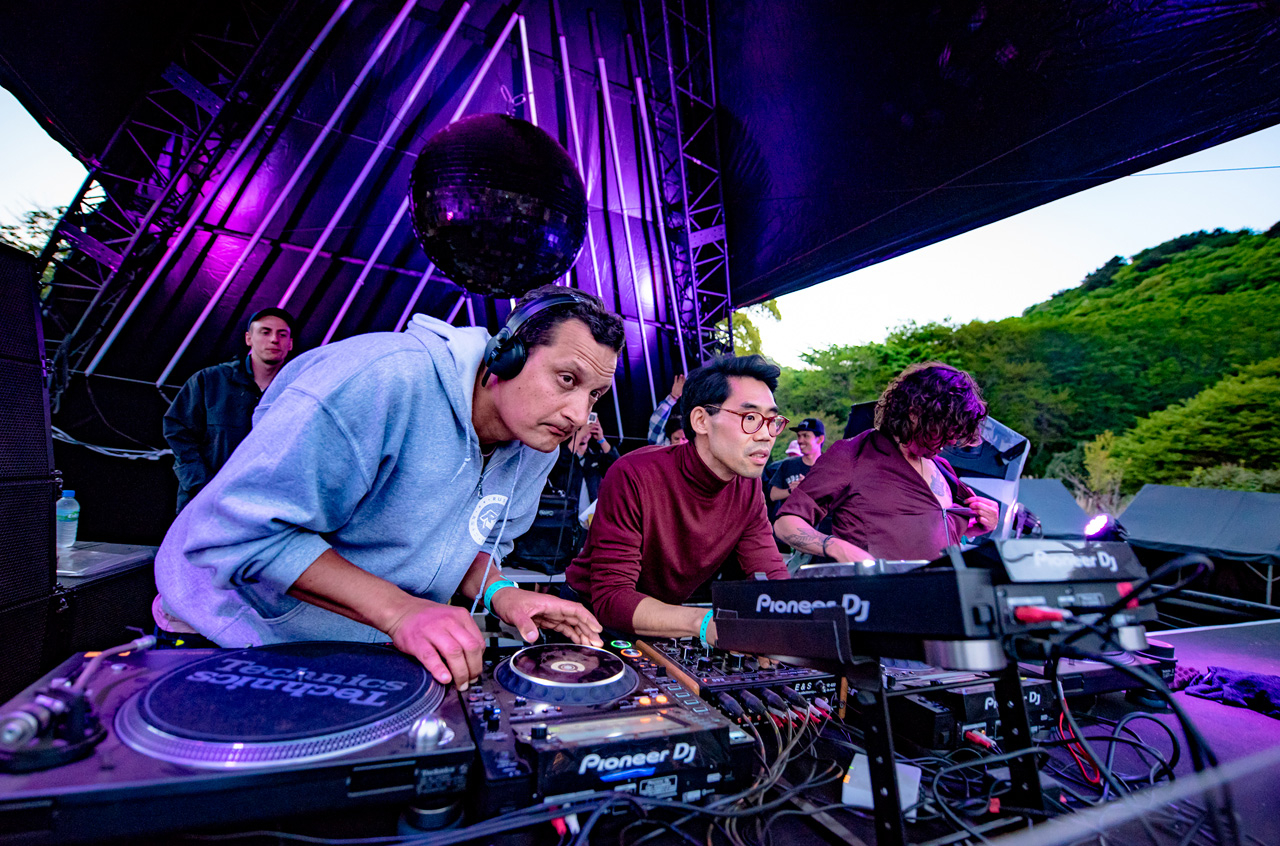- Having launched as an inner-city festival in Tokyo in 2010, Rainbow Disco Club expanded its scope by relocating to the Izu Peninsula (about 150KM southwest of the capital) in 2015. Since then its popularity has rapidly grown, to the point where you'd easily consider it one of Japan's leading dance music events. I'll admit that until I set foot in the beautiful venue for the first time last year, I was still a little skeptical as to whether it would actually live up to the hype. It does. The prospect of enjoying another three days of house and disco music in a place so magical was thrilling.
Rainbow Disco Club doesn't run all night and the casual, family-friendly vibe attracts a diverse crowd. This year's gathering seemed to have an even greater turnout than 2016, with revellers from across Japan as well as overseas. Onsite, past the shops and food stalls, stairs lead down to a grassy expanse that acts as the main dance floor. From the hilltop looking down, the view resembled a hakoniwa (Japanese miniature garden). The sound of soothing music filled the air as people set up their tents, letting everybody know that the party was underway.
As is the case each year, resident (and recent RA podcaster) Sisi opened the festival, playing mellow, downtempo cuts with an '80s/'90s tinge, including an edit of Sade's "I Couldn't Love You More." Eventually, he leant towards more tribal sounds—his forte—while still keeping things relaxing.
Later in the evening, as the Hessle Audio trio mesmerized the crowd with a mix of old school techno, house and bass music, I decided to head back towards the entrance to check out the RBMA stage, where a Pioneer soundsystem was pumping out pristine, powerful beats. Palms Trax played first, serving up a winning blend of Chicago, Detroit and vocal tracks. By the time Gerd Janson took the stage, most of the audience had migrated from the main floor and excitement levels were sky-high. The core of his set was disco, though he made room for explosive classics like David Joseph's "You Can't Hide (Your Love From Me)" and The Night Writers' "Let The Music Use You."
The next morning, I caught a bit of Kaoru Inoue's opening set before heading out to a nearby onsen (hot spring) facility. The surrounding Izu and Atami areas are popular destinations for tourists and festival revellers, packed with eateries offering fresh seafood. That it's so easy to escape to nearby city Shizuoka is another of the great things about the festival. By the time I got back to the main stage, Floating Points was livening things up with vibrant disco and funk. The UK artist hummed and swayed on stage as he worked through a set that was full of catchy melodies, with rare records played alongside classics like The Gap Band's "Messin' With My Mind."
DJ Nobu and Fred P played back-to-back to close the main stage on Thursday. Their set moved from raw techno through deep house that went nicely with the cool outdoor breeze. The peak came when Fred P dropped a soaring vocal house stomper that detonated the dance floor. Still hungry for more, I made my way to the RBMA stage for another back-to-back, this time featuring DJ Nori, who has been DJing for 35 years, and Skeme Richards, a member of the legendary breakdance originators Rock Steady Crew. They played plenty of disco classics, but the most exhilarating moment was the funky guitar intro from Minako Yoshida's elegant "Let's Do It."
The organisers had replaced last year's Funktion-One system with a d&b audiotechnik model, something they'd been wanting to do for a while. The sound was so punchy and crisp that the music was clearly audible even from the entrance area. Both digital beats and acoustic notes sounded beautiful. Perfect, then, for the Rush Hour crew's era-spanning record collections. San Proper, who could be spotted across the site from early in the morning, seemed to be having more fun than anyone else. Behind the decks, he hopped between reggae, funk and house, favouring messy tracks with unique vocals. Listen to Syreeta's "Tiki Tiki Donga" and you'll get a feel for his set.
The weather was generally nice throughout the festival, but the sky was the clearest on Friday, with sunlight baking the main stage. It was packed with dancers by the time Antal came on around noon. Dust clouds formed from all the moving bodies and dry wind. The Rush Hour cofounder displayed an anything-goes attitude, switching from disco to Brazilian music to Arthur Russell's "Let's Go Swimming." Hunee began by stopping the music briefly before veering off in a more obscure direction. There was cinematic deep house, like Glenn Underground & Cei-Bei's "House Music Will Never Die" and Chez Damier & Stacey Pullen's "Forever Monna." Listening to these with the sun on my face was an exceptional moment. The set came to a close with some disco jams, including Junko Ohashi's "Feel So Fine."
As San Proper hyped up the crowd on the mic, Chicago's Sadar Bahar made his way to the turntables. He played one of his favourite tracks, Tatsuro Yamashita's "Love Talkin' (Honey It's You)" right off the bat, sending the dance floor wild. Rooted firmly in black music, his selections felt sophisticated, with mighty rhythms and soulful vibes captivating the crowd. Even a song like Quincy Jones's "Ai No Corrida" sounded strangely fresh in his hands.
The final act of the festival was, like in 2016, a back-to-back set from the Rush Hour Allstars: Antal, San Proper and Hunee. Watching them in their element it was hard to not feel emotional, especially with Antal's kids running around onstage—a sight that's become a staple of Rainbow Disco Club in recent years. They began with some no-frills disco, then edged into tribal and acid house, holding the crowd under their spell all the way through. As dusk fell, they rolled out some killer electro disco. I danced so hard I got sand in my mouth. I'm sure I wasn't the only one.
Photo credit /
Masanori Naruse, Suguru Saito
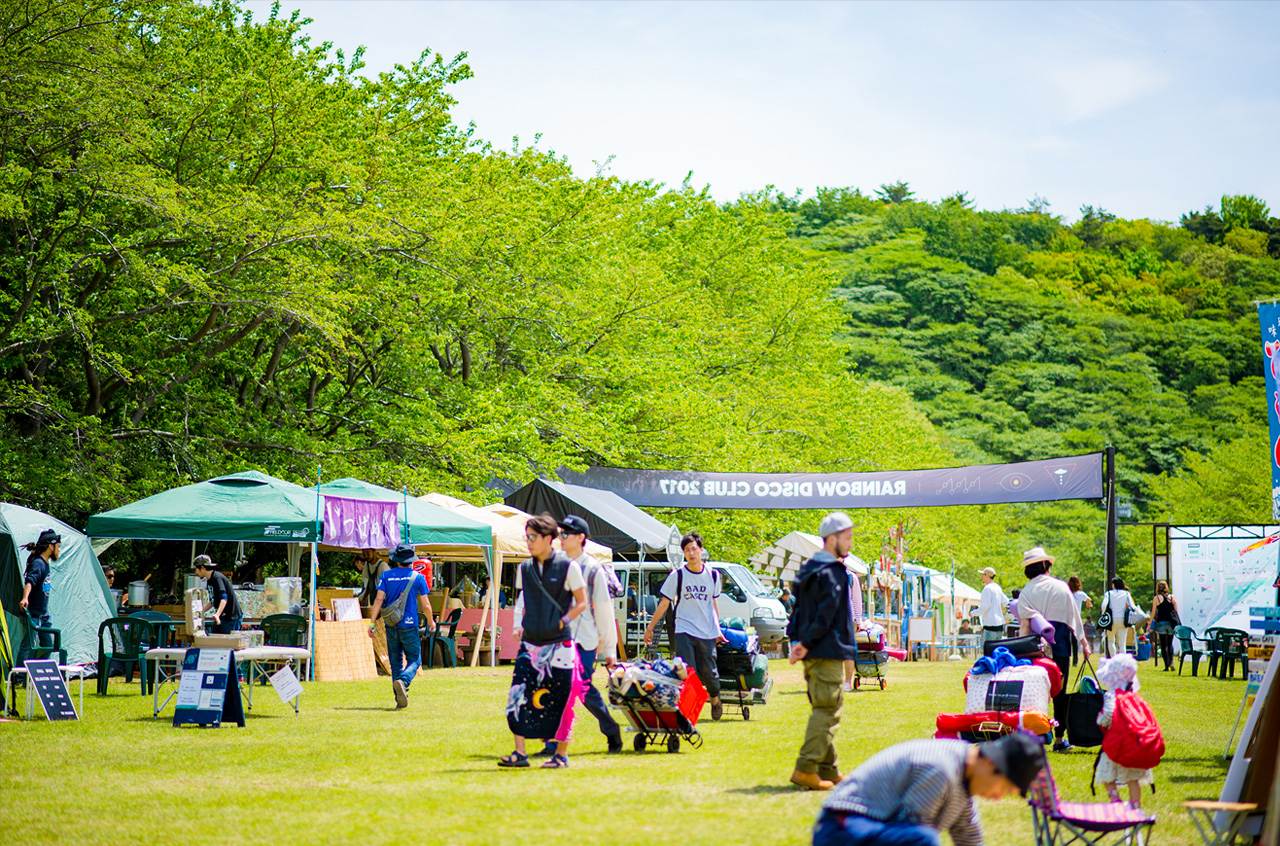 Later in the evening, as the Hessle Audio trio mesmerized the crowd with a mix of old school techno, house and bass music, I decided to head back towards the entrance to check out the RBMA stage, where a Pioneer soundsystem was pumping out pristine, powerful beats. Palms Trax played first, serving up a winning blend of Chicago, Detroit and vocal tracks. By the time Gerd Janson took the stage, most of the audience had migrated from the main floor and excitement levels were sky-high. The core of his set was disco, though he made room for explosive classics like David Joseph's "You Can't Hide (Your Love From Me)" and The Night Writers' "Let The Music Use You." The next morning, I caught a bit of Kaoru Inoue's opening set before heading out to a nearby onsen (hot spring) facility. The surrounding Izu and Atami areas are popular destinations for tourists and festival revellers, packed with eateries offering fresh seafood. That it's so easy to escape to nearby city Shizuoka is another of the great things about the festival. By the time I got back to the main stage, Floating Points was livening things up with vibrant disco and funk. The UK artist hummed and swayed on stage as he worked through a set that was full of catchy melodies, with rare records played alongside classics like The Gap Band's "Messin' With My Mind."
Later in the evening, as the Hessle Audio trio mesmerized the crowd with a mix of old school techno, house and bass music, I decided to head back towards the entrance to check out the RBMA stage, where a Pioneer soundsystem was pumping out pristine, powerful beats. Palms Trax played first, serving up a winning blend of Chicago, Detroit and vocal tracks. By the time Gerd Janson took the stage, most of the audience had migrated from the main floor and excitement levels were sky-high. The core of his set was disco, though he made room for explosive classics like David Joseph's "You Can't Hide (Your Love From Me)" and The Night Writers' "Let The Music Use You." The next morning, I caught a bit of Kaoru Inoue's opening set before heading out to a nearby onsen (hot spring) facility. The surrounding Izu and Atami areas are popular destinations for tourists and festival revellers, packed with eateries offering fresh seafood. That it's so easy to escape to nearby city Shizuoka is another of the great things about the festival. By the time I got back to the main stage, Floating Points was livening things up with vibrant disco and funk. The UK artist hummed and swayed on stage as he worked through a set that was full of catchy melodies, with rare records played alongside classics like The Gap Band's "Messin' With My Mind."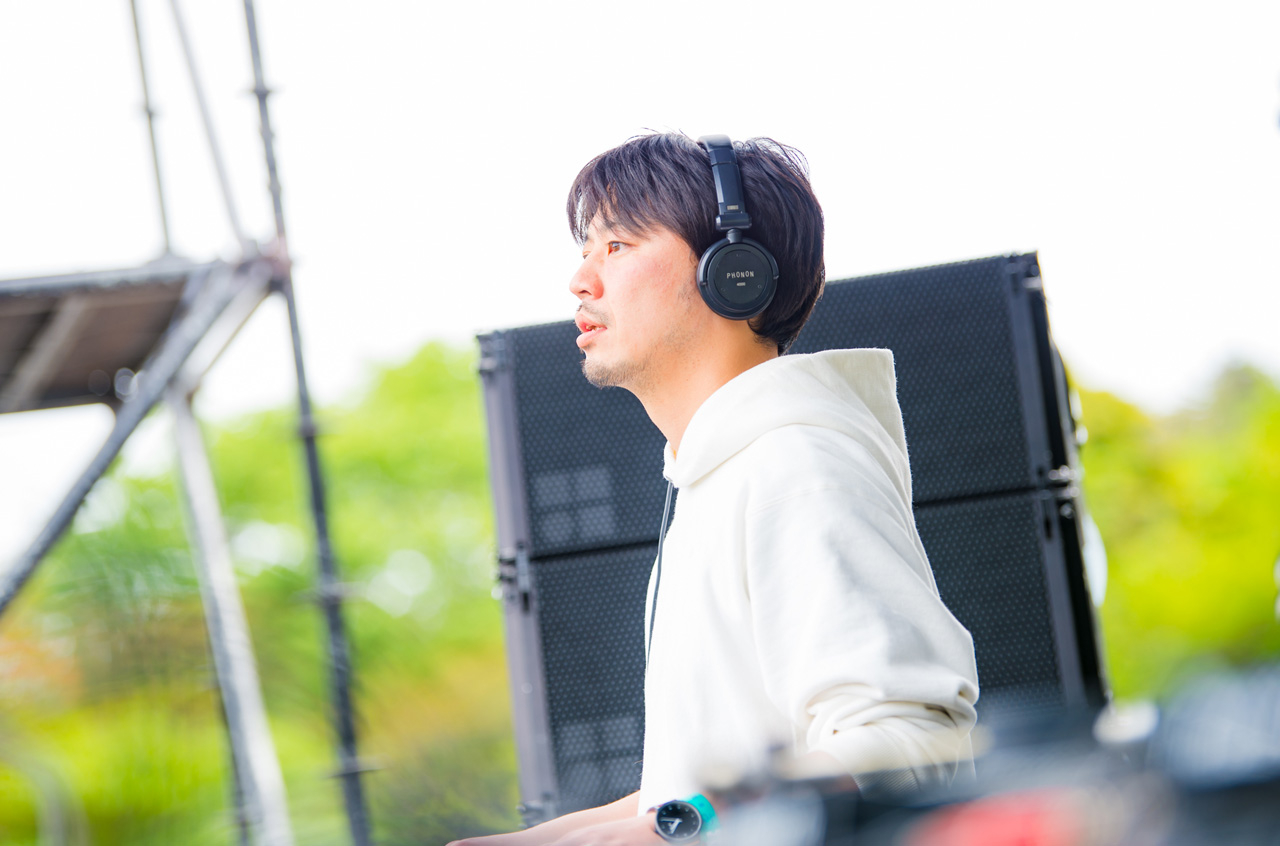
 DJ Nobu and Fred P played back-to-back to close the main stage on Thursday. Their set moved from raw techno through deep house that went nicely with the cool outdoor breeze. The peak came when Fred P dropped a soaring vocal house stomper that detonated the dance floor. Still hungry for more, I made my way to the RBMA stage for another back-to-back, this time featuring DJ Nori, who has been DJing for 35 years, and Skeme Richards, a member of the legendary breakdance originators Rock Steady Crew. They played plenty of disco classics, but the most exhilarating moment was the funky guitar intro from Minako Yoshida's elegant "Let's Do It." The organisers had replaced last year's Funktion-One system with a d&b audiotechnik model, something they'd been wanting to do for a while. The sound was so punchy and crisp that the music was clearly audible even from the entrance area. Both digital beats and acoustic notes sounded beautiful. Perfect, then, for the Rush Hour crew's era-spanning record collections. San Proper, who could be spotted across the site from early in the morning, seemed to be having more fun than anyone else. Behind the decks, he hopped between reggae, funk and house, favouring messy tracks with unique vocals. Listen to Syreeta's "Tiki Tiki Donga" and you'll get a feel for his set.
DJ Nobu and Fred P played back-to-back to close the main stage on Thursday. Their set moved from raw techno through deep house that went nicely with the cool outdoor breeze. The peak came when Fred P dropped a soaring vocal house stomper that detonated the dance floor. Still hungry for more, I made my way to the RBMA stage for another back-to-back, this time featuring DJ Nori, who has been DJing for 35 years, and Skeme Richards, a member of the legendary breakdance originators Rock Steady Crew. They played plenty of disco classics, but the most exhilarating moment was the funky guitar intro from Minako Yoshida's elegant "Let's Do It." The organisers had replaced last year's Funktion-One system with a d&b audiotechnik model, something they'd been wanting to do for a while. The sound was so punchy and crisp that the music was clearly audible even from the entrance area. Both digital beats and acoustic notes sounded beautiful. Perfect, then, for the Rush Hour crew's era-spanning record collections. San Proper, who could be spotted across the site from early in the morning, seemed to be having more fun than anyone else. Behind the decks, he hopped between reggae, funk and house, favouring messy tracks with unique vocals. Listen to Syreeta's "Tiki Tiki Donga" and you'll get a feel for his set. The weather was generally nice throughout the festival, but the sky was the clearest on Friday, with sunlight baking the main stage. It was packed with dancers by the time Antal came on around noon. Dust clouds formed from all the moving bodies and dry wind. The Rush Hour cofounder displayed an anything-goes attitude, switching from disco to Brazilian music to Arthur Russell's "Let's Go Swimming." Hunee began by stopping the music briefly before veering off in a more obscure direction. There was cinematic deep house, like Glenn Underground & Cei-Bei's "House Music Will Never Die" and Chez Damier & Stacey Pullen's "Forever Monna." Listening to these with the sun on my face was an exceptional moment. The set came to a close with some disco jams, including Junko Ohashi's "Feel So Fine."
The weather was generally nice throughout the festival, but the sky was the clearest on Friday, with sunlight baking the main stage. It was packed with dancers by the time Antal came on around noon. Dust clouds formed from all the moving bodies and dry wind. The Rush Hour cofounder displayed an anything-goes attitude, switching from disco to Brazilian music to Arthur Russell's "Let's Go Swimming." Hunee began by stopping the music briefly before veering off in a more obscure direction. There was cinematic deep house, like Glenn Underground & Cei-Bei's "House Music Will Never Die" and Chez Damier & Stacey Pullen's "Forever Monna." Listening to these with the sun on my face was an exceptional moment. The set came to a close with some disco jams, including Junko Ohashi's "Feel So Fine."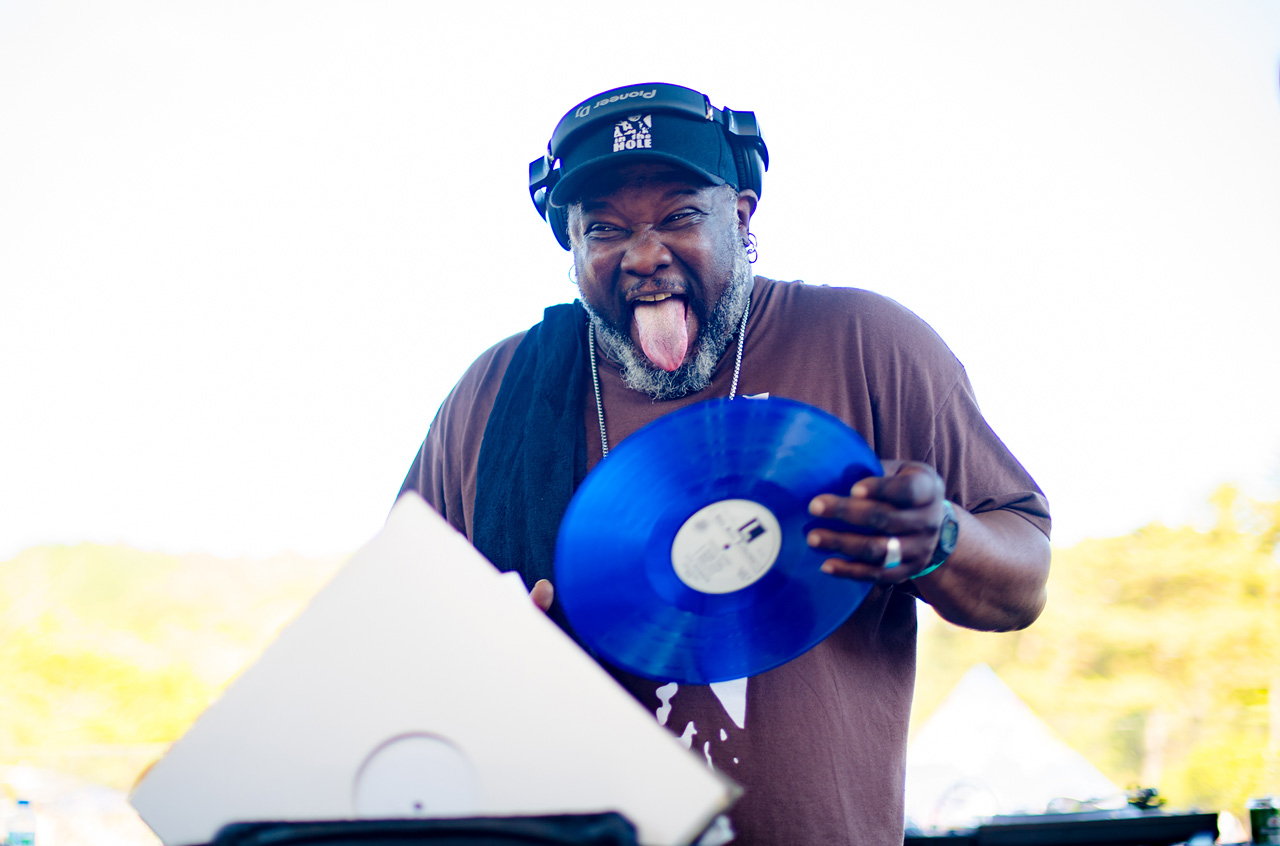
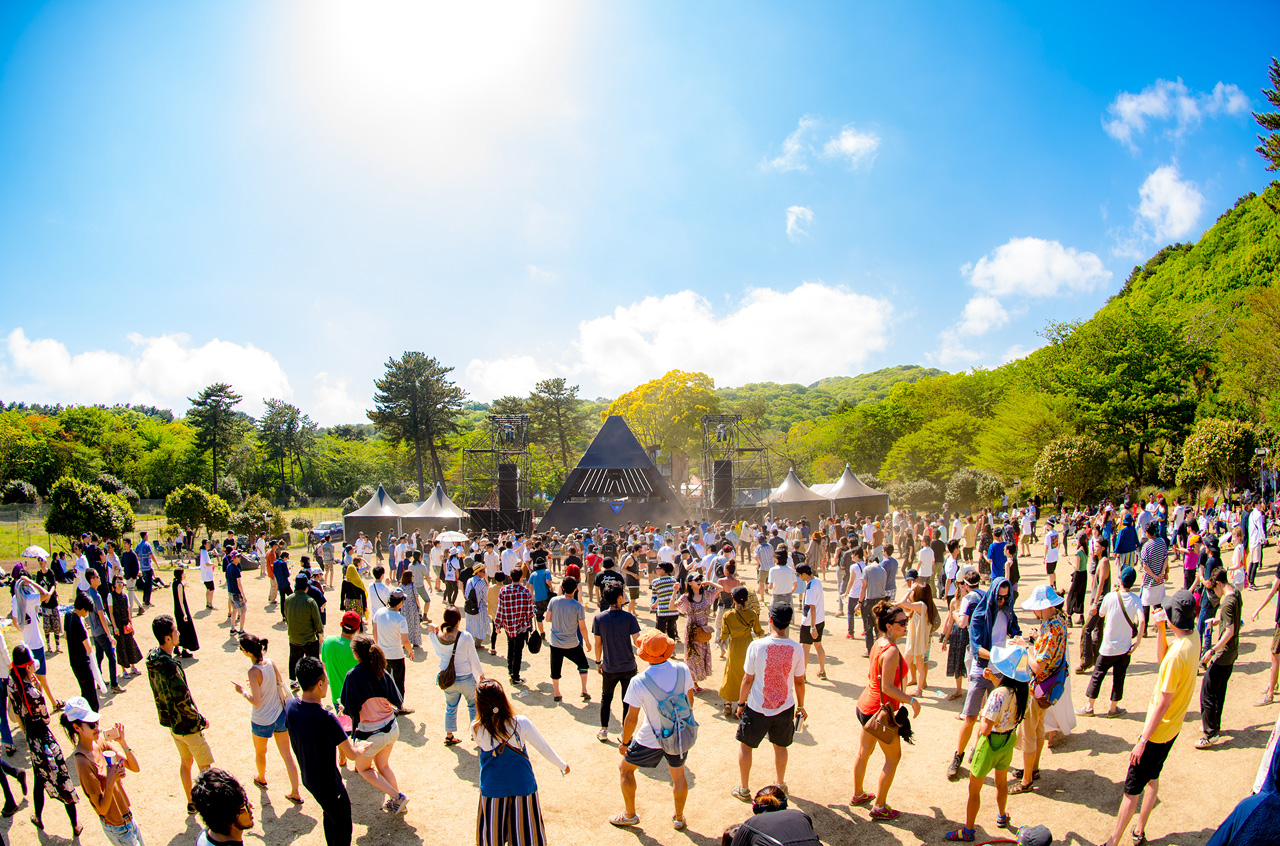 As San Proper hyped up the crowd on the mic, Chicago's Sadar Bahar made his way to the turntables. He played one of his favourite tracks, Tatsuro Yamashita's "Love Talkin' (Honey It's You)" right off the bat, sending the dance floor wild. Rooted firmly in black music, his selections felt sophisticated, with mighty rhythms and soulful vibes captivating the crowd. Even a song like Quincy Jones's "Ai No Corrida" sounded strangely fresh in his hands. The final act of the festival was, like in 2016, a back-to-back set from the Rush Hour Allstars: Antal, San Proper and Hunee. Watching them in their element it was hard to not feel emotional, especially with Antal's kids running around onstage—a sight that's become a staple of Rainbow Disco Club in recent years. They began with some no-frills disco, then edged into tribal and acid house, holding the crowd under their spell all the way through. As dusk fell, they rolled out some killer electro disco. I danced so hard I got sand in my mouth. I'm sure I wasn't the only one. Photo credit / Masanori Naruse, Suguru Saito
As San Proper hyped up the crowd on the mic, Chicago's Sadar Bahar made his way to the turntables. He played one of his favourite tracks, Tatsuro Yamashita's "Love Talkin' (Honey It's You)" right off the bat, sending the dance floor wild. Rooted firmly in black music, his selections felt sophisticated, with mighty rhythms and soulful vibes captivating the crowd. Even a song like Quincy Jones's "Ai No Corrida" sounded strangely fresh in his hands. The final act of the festival was, like in 2016, a back-to-back set from the Rush Hour Allstars: Antal, San Proper and Hunee. Watching them in their element it was hard to not feel emotional, especially with Antal's kids running around onstage—a sight that's become a staple of Rainbow Disco Club in recent years. They began with some no-frills disco, then edged into tribal and acid house, holding the crowd under their spell all the way through. As dusk fell, they rolled out some killer electro disco. I danced so hard I got sand in my mouth. I'm sure I wasn't the only one. Photo credit / Masanori Naruse, Suguru Saito